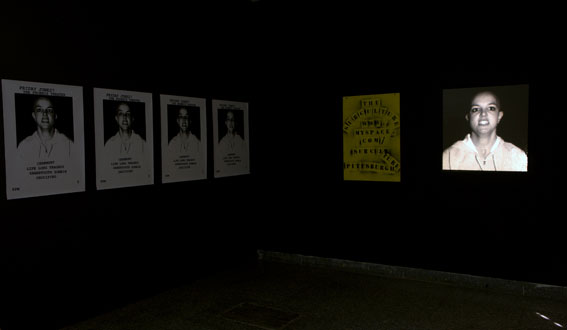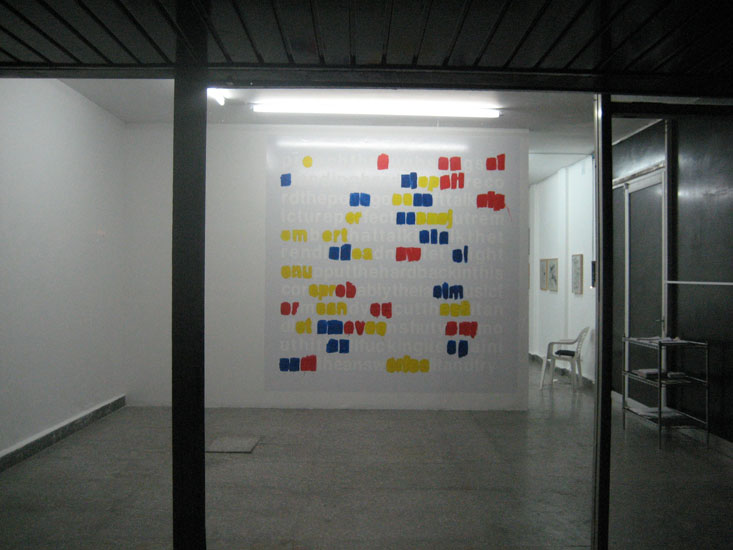LINKS:Real Fine ArtsEAIBernadette CorporationHouse of GagaMexico City
Writes Walczak: "At some point during the writing of this EAI bio, Antek Walczak imagined grouping all his nouvelle-vague-grammar-crust videos under the title Old Life of a Sad Film Student. While other film students in 1990s New York were directing music videos for Pavement, starting youtube-before-youtube underground film fests, or going to real film festivals like Cannes with their real films, Walczak was working at his desk in the Bowery offices of a radical offshoot of downtown fashion called Bernadette Corporation. After several years devoted to reconsidering collective avant-garde legacies in terms of the contemporary media environment, change came in the form of an internal power struggle that ended the B-Corp fashion label and split up the collective into irreconcilable factions, leaving behind a pile of tapes from unfinished fashion spots that became material for Antek's solo video debut. It was during this hiatus of 1998-9, between incarnations of Bernadette Corporation, that Walczak developed the post-Godardian narrated essay style that bridges works as divergent as The BC Corporate Story and Get Rid of Yourself.
For fun, here are titles from the various fashion model segments of the aborted 1997 BC video shoot that would become 1998?s Dynasty: Animals in Your Neighborhood; Fresh Brats' Worst; The Robots are Ready; We never loved your body; Lady in a Jam. This is to point out the language that came out of the completely isolated self-authenticated context of early Bernadette Corporation and as well how Walczak's 'failed film school re-appropriation of an alternative cinema could only tenuously exist in a version of the downtown 90s scene that doesn't appear in any forgotten histories. Wanting nothing to do with whatever remained of East Village punk, no wave, or grunge subculture, it was an aesthetic that also happened outside of single-channel video art, operating under an illusion of a post-cinema that thought it was still possible to sit in darkened movie theaters instead of filling up the white empty spaces of galleries. It's worth noting that, in pursuit of such nostalgic resistance, Antek even went as far as moving to Paris to make films, write film criticism, and grow a beard at the start of the 00 decade. The Sad Film Student works fall under the early stages of what would became a full-blown condition at the start of the 21st century -- a passion for dead fictional substances and authentic forms, a haunted authorial voice speaking across grids of nonlinear layers, tracks, clips and timelines."
Antek Walczak was born in Grand Forks, North Dakota in 1968 and raised in Pittsburgh, Pennsylvania. He received a BFA at New York University's Tisch School of the Arts. His work has been shown at Cinematexas in Austin, the Pompidou Center, Fri-Art in Fribourg, Switzerland and the Museum Ludwig in Cologne. He is a core member of Bernadette Corporation since 1994. He has written for magazines/zines like Purple, Pacemaker, Pazmaker, Zehar, and Made in USA.


From 1995 to 1997, Bernadette Corporation constituted itself as an underground fashion label based in New York, complete with a head designer and four well-received runway shows. Drawing on the vernacular of local subcultures, from recent immigrant communities to the downtown fashion scene itself, the label's collections can be seen as a self-consciously critical examination of social codes and their expression through industrial nexuses of power and money. The shows themselves, which are documented on this video as "a condensed history of anti-fashion," send up the spectacular nature of the fashion industry, incorporating such trappings as bear-costumed mascots, troupes of high-school dancers, and jets of fire.






















